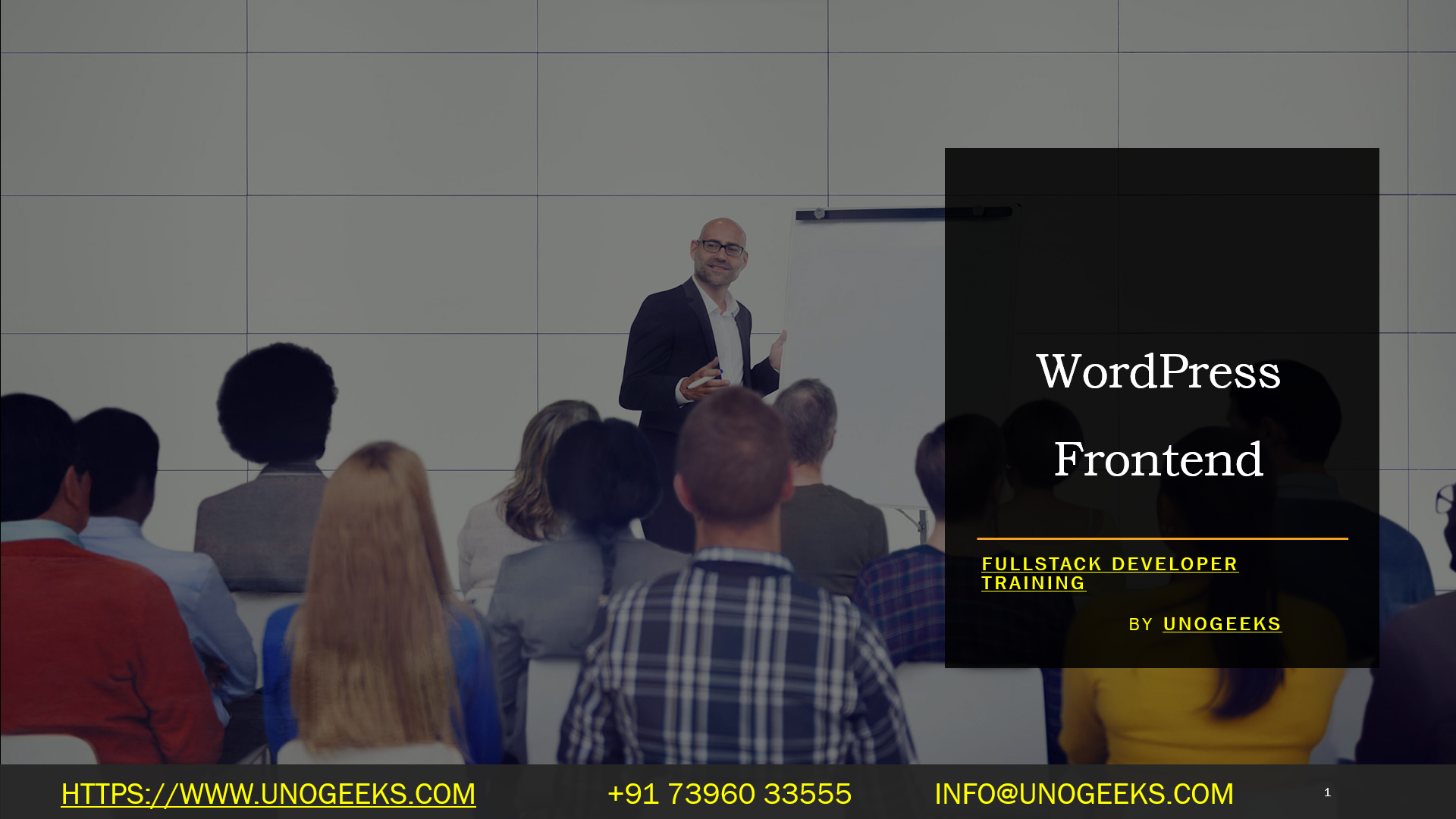WordPress Frontend
WordPress Frontend
WordPress Frontend refers to the user-facing part of a WordPress website, which is visible to visitors and users. It includes the design, layout, and content that users interact with when they visit a WordPress site. Here are key components and aspects of the WordPress Frontend:
- Themes: The frontend appearance and layout of a WordPress website are defined by the chosen theme. Themes are pre-designed templates that determine the overall look, color scheme, typography, and style of the site. Users can select and customize themes to match their brand and design preferences.
- Templates: WordPress themes consist of various templates that control the layout of specific pages or content types. Common templates include home pages, blog post pages, single post pages, archive pages, and more.
- Customization: Users can customize the frontend of their WordPress site using the WordPress Customizer. This tool allows them to make real-time changes to the site’s appearance, including adjusting colors, fonts, header images, and background images.
- Widgets: Widgets are small, reusable blocks of content or functionality that can be added to predefined widget areas in a theme’s frontend. Widgets can include things like navigation menus, recent posts, search bars, and more.
- Menus: Users can create custom menus to control the navigation structure and links in the frontend. Menus are often used for site navigation, creating dropdown menus, and organizing content.
- Plugins: Some plugins add frontend features to a WordPress site, such as contact forms, social media sharing buttons, and image galleries. These plugins enhance the user experience by providing additional functionality.
- Content: The frontend displays the content created in the WordPress backend, including posts, pages, and custom post types. Users can format and style their content using the built-in visual editor or custom fields.
- Responsive Design: Modern WordPress themes are designed to be responsive, ensuring that the frontend looks and functions well on various devices and screen sizes, including desktops, tablets, and smartphones.
- User Interaction: Users can interact with the frontend by leaving comments on posts, filling out contact forms, and engaging with social sharing buttons. User-generated content can be displayed on the frontend.
- Search Functionality: WordPress includes a built-in search feature that allows users to search for specific content within the site. Search results are displayed on the frontend.
- Pagination: For sites with multiple pages of content (e.g., blog archives), pagination controls are often used to navigate between pages of results.
- Comments: Visitors can leave comments on blog posts and other content, and these comments are displayed on the frontend. Users can moderate and reply to comments.
- SEO Optimization: WordPress websites can be optimized for search engines by using SEO plugins and best practices. This helps improve the visibility of the frontend in search engine results.
- Performance Optimization: Techniques like caching, image optimization, and content delivery networks (CDNs) can be used to optimize frontend performance, ensuring fast page load times.
- Analytics Integration: Web analytics tools can be integrated into the frontend to track user behavior and gather insights about site traffic and user engagement.
The WordPress Frontend is the user’s window to the website’s content and functionality. It’s where design and content come together to create a compelling and user-friendly experience for visitors.
Full Stack Developer Training Demo Day 1 Video:
Conclusion:
Unogeeks is the No.1 IT Training Institute for Full Stack Developer Training. Anyone Disagree? Please drop in a comment
You can check out our other latest blogs on Full Stack Developer Training here – Full Stack Developer Blogs
Please check out our Best In Class Full Stack Developer Training Details here – Full Stack Developer Training

———————————-
For Training inquiries:
Call/Whatsapp: +91 73960 33555
Mail us at: info@unogeeks.com
Our Website ➜ https://unogeeks.com
Follow us:
Instagram: https://www.instagram.com/unogeeks
Facebook:https://www.facebook.com/UnogeeksSoftwareTrainingInstitute
Twitter: https://twitter.com/unogeeks
